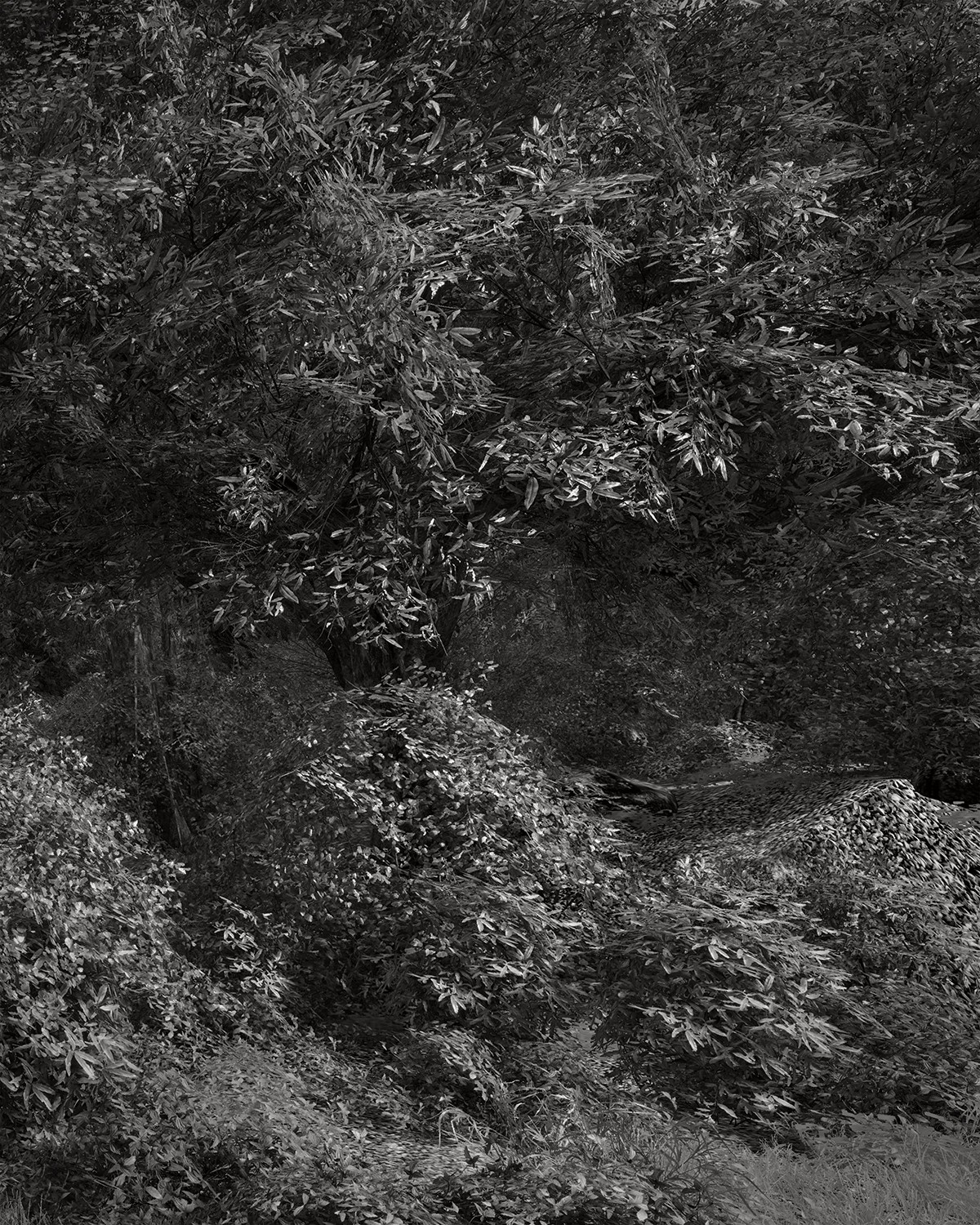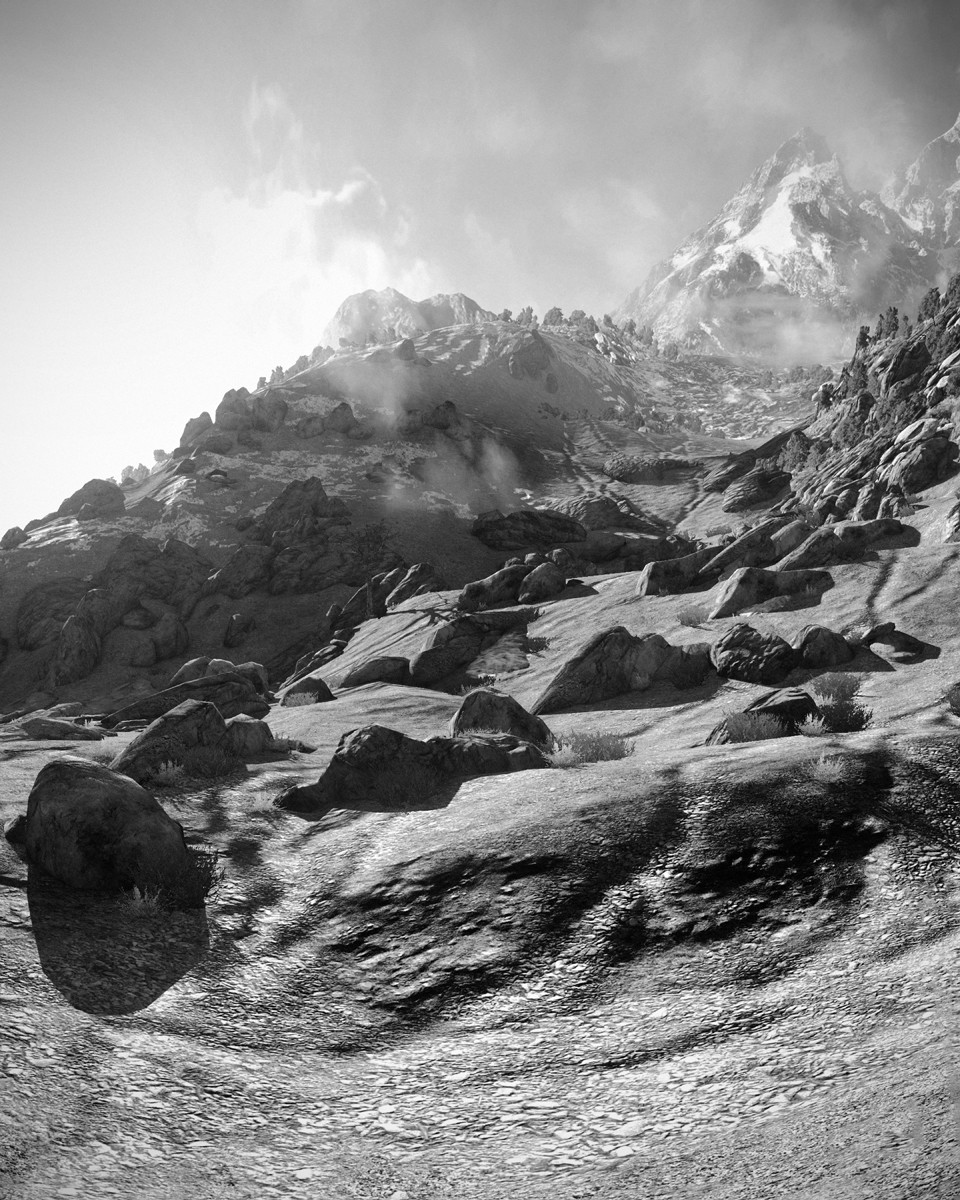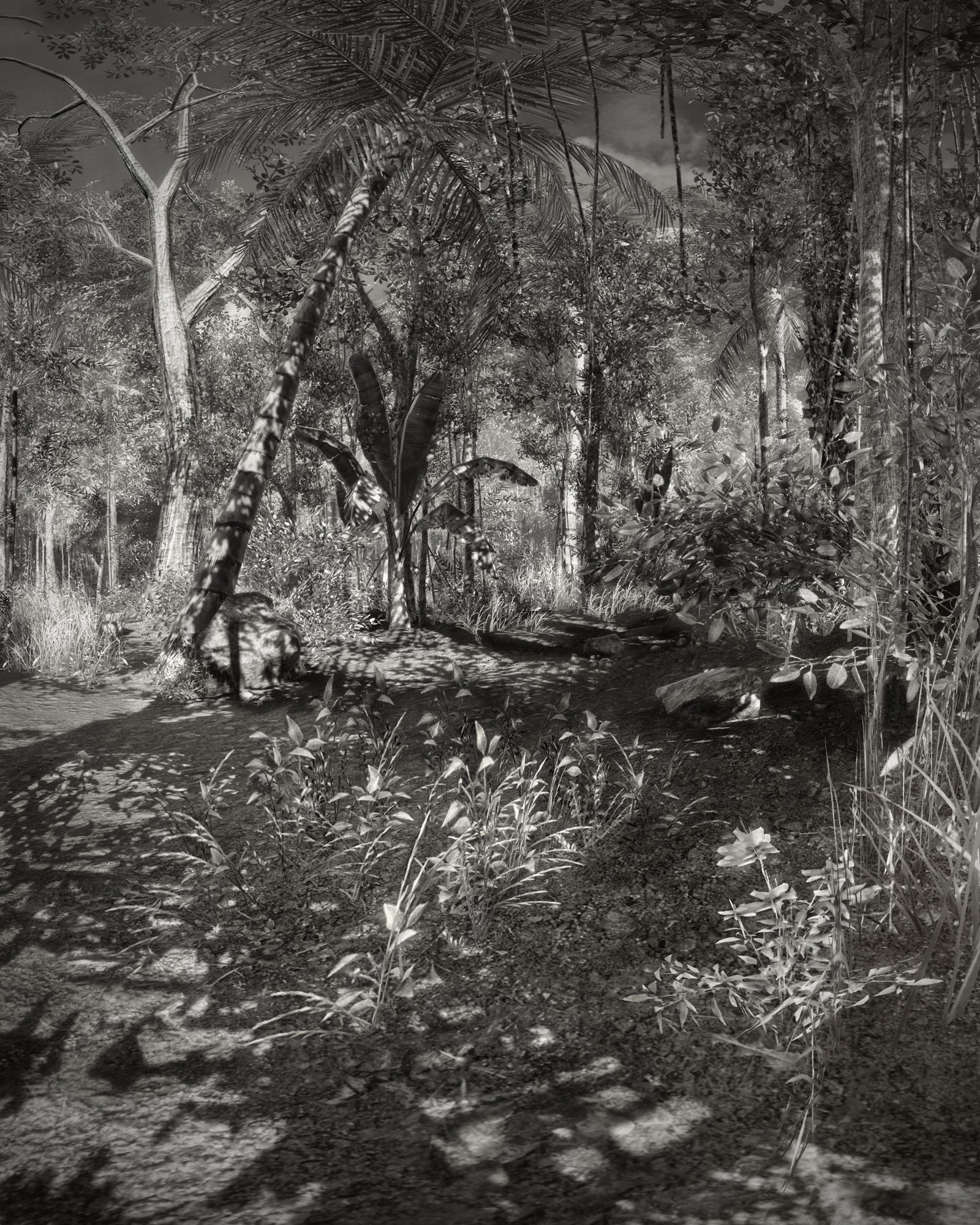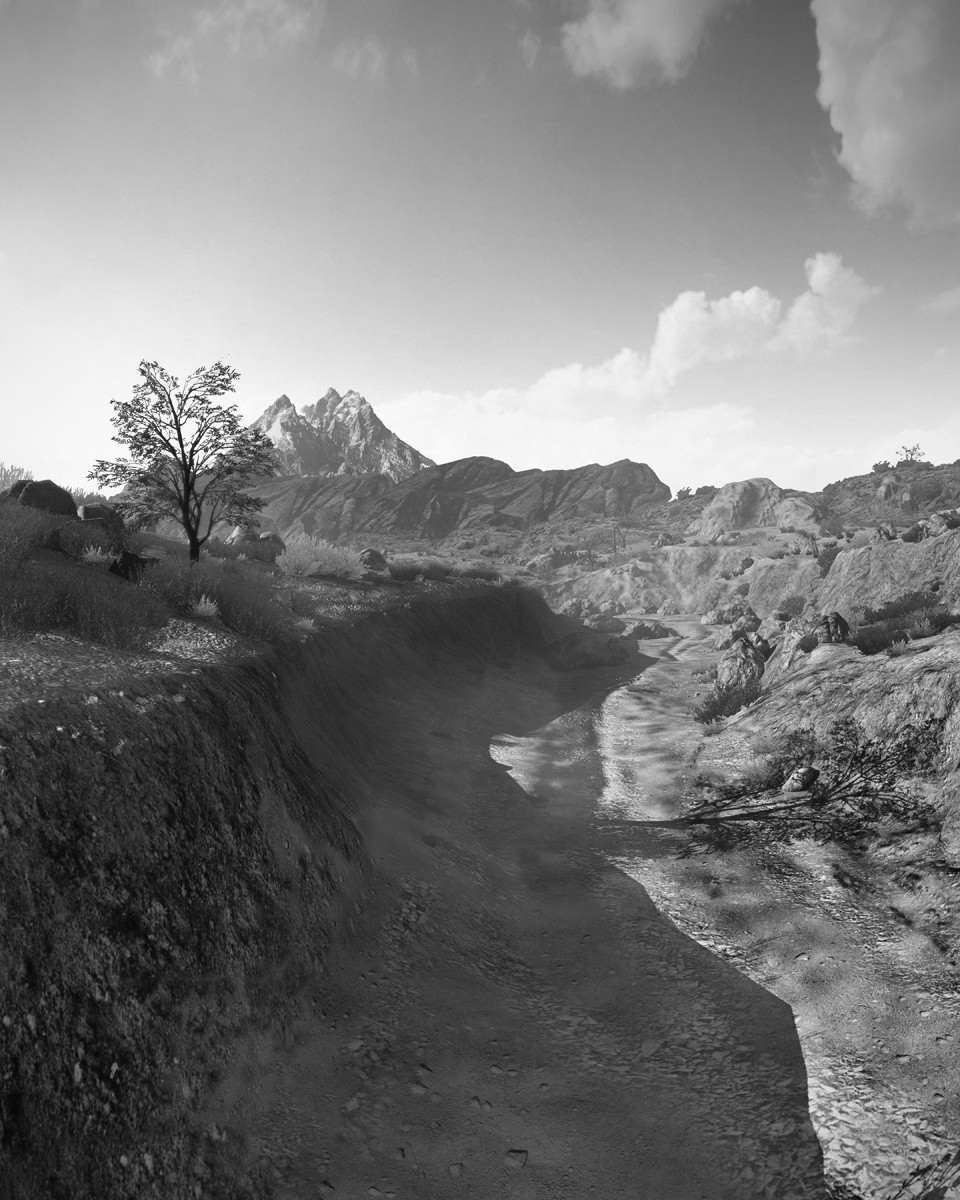BEAUTY IN THE TIME OF VIOLENCE: THE ART OF JUSTIN BERRY
Artist Justin Berry makes high-resolution pictures of virtual landscapes found in video games, mostly first-person-shooter formats such as Crysis, Call of Duty: Black Ops, and Medal of Honor, the latter set amidst a Taliban stronghold in Afghanistan. But Berry forgoes the combatant mindset of the games, instead playing them as a photographer, fighting for the opportunity to explore. For in order to obtain an unobstructed image of the landscape, one has to point a weapon at it, and then take advantage of the moment when the avatar’s hands fall away from the screen long enough. As a result, the violence in Berry’s images is palpable yet remains invisible, similar to Christopher Williams’s seminal project Angola to Vietnam (1989), where seemingly innocent floral subjects were linked to the conflict-ridden lands from which the species in question originated.
“To turn away from the fighting and focus on the landscape is empowering,” says Berry, who describes the images as, “the perfect representations of heaven and hell, both paradisiacal retreat and resource-starved prison of the marooned.” The artist uses the games’ built-in camera or operating system to take multiple screenshots, which are then stitched together into a single image — a digital analogue to David Hockney’s collage project Joiners from the early 1980s. However, unlike Joiners, where the discrete images that make up the whole are perceptible, each from a slightly different time and perspective (a quality linking them to Cubism), the seamless outcome Berry achieves using raster-graphics editing software to heal the rift in time and space leaves scant evidence that the final works are built of image composites at all. Berry’s landscape tableaux, mostly in black and white, do connect to other 20th-century antecedents, however, his treatment of light, contrast, and depth of field recalling the visual intelligence of classic American landscape photographers like Ansel Adams and Robert Adams, or of the Hudson River School of landscape painting. In addition to traditional landscapes, Berry’s videogame scenes should also be considered amidst other practices invested in making art from within virtual space, such as those of Berry’s friend and sometime collaborator Jon Rafman, or those of Mark Tribe, who produced a similar project entitled Rare Earth (2012) that features landscapes from combat video games and a New York State militia training ground. However, Berry’s flâneur is entirely his own, more Walter Benjamin’s detective and less Baudelaire’s voyeur, charting the extents of the overlooked terrain of the digital Anthropocene, an artificially produced nature created by countless anonymous videogame designers.
The condition where that which is human-made appears to be the work of nature is not isolated to video games, and the rate at which virtual warfare occurs in real life is on the rise. Take, for example, the expansion of (and resistance to) genetically modified organisms, the success of the 2010 Stuxnet virus used to destabilize the Iranian nuclear program, or the highly mediatized 2014 cyber-attack on Sony Pictures. “We don’t have a road map that shows us how to honor meaningful experiences that happen in virtual worlds,” says Berry about his work. “We’ve been told, ‘Don’t worry, you can’t get hurt there.’ But you can.”
Taken from PIN–UP 18, Spring Summer 2015












